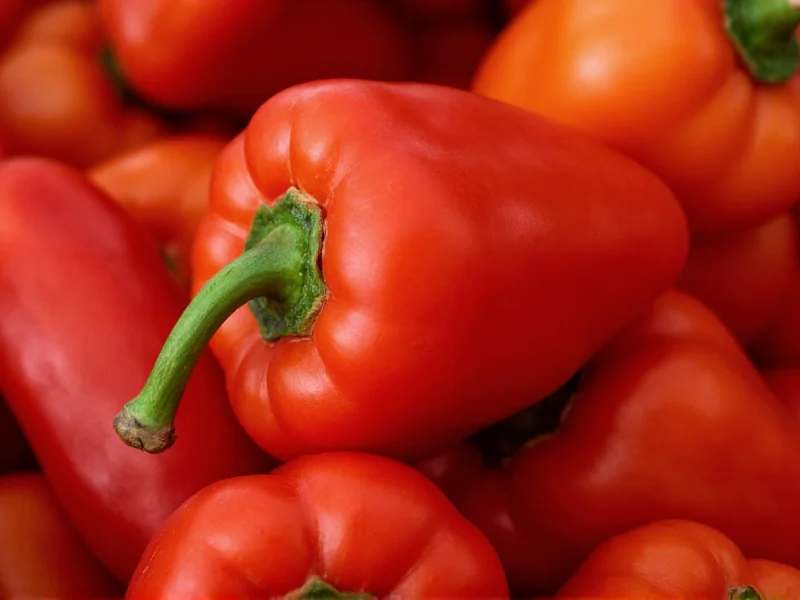Understanding exactly how hot is a habanero requires examining both scientific measurements and practical culinary context. The Scoville scale, developed by pharmacist Wilbur Scoville in 1912, remains the standard measurement for chili pepper heat. This scale quantifies capsaicin concentration—the compound responsible for that burning sensation—through dilution testing.
Decoding the Habanero Heat Range
When exploring how hot is a habanero, it's crucial to recognize the natural variation within this pepper family. The standard habanero (Capsicum chinense) typically registers between 100,000-350,000 SHU, but several factors influence this measurement:
- Geographical origin: Caribbean-grown habaneros often exceed 300,000 SHU, while Mexican varieties may stay closer to 150,000 SHU
- Growing conditions: Soil composition, rainfall, and sunlight exposure significantly impact capsaicin production
- Ripeness: Fully mature red or orange habaneros generally pack more heat than green, unripe versions
- Individual variation: Even peppers from the same plant can show substantial heat differences
| Pepper Variety | Scoville Heat Units (SHU) | Heat Comparison |
|---|---|---|
| Habanero | 100,000-350,000 | Reference standard |
| Scotch Bonnet | 100,000-350,000 | Similar heat profile |
| Jalapeño | 2,500-8,000 | 12-40x milder than habanero |
| Cayenne | 30,000-50,000 | 2-7x milder than habanero |
| Ghost Pepper | 855,000-1,041,427 | 2.5-8x hotter than habanero |
Practical Implications of Habanero Heat
When considering how hot is a habanero pepper in real-world terms, the experience extends beyond abstract numbers. Consuming a habanero triggers immediate physiological responses:
- Initial impact: Sharp burning sensation begins within seconds of contact with mucous membranes
- Peak intensity: Maximum heat sensation typically hits at 2-5 minutes after consumption
- Duration: Burning can persist for 15-45 minutes depending on individual tolerance
- Aftereffects: Some experience lingering warmth for several hours
Interestingly, habaneros deliver more than just heat—they contribute complex fruity, floral notes that chefs prize in Caribbean and Yucatecan cuisine. This flavor complexity explains why many hot sauce enthusiasts tolerate the intense burn.
Factors That Influence Habanero Heat Perception
The question of how hot is a habanero depends significantly on preparation methods and individual biology:
- Seeds and membranes: The placental tissue surrounding seeds contains 80-90% of capsaicin—removing these reduces heat substantially
- Food pairing: Dairy products (milk, yogurt) neutralize capsaicin better than water, which merely spreads the oil
- Genetic factors: Some people possess TRPV1 receptor variations making them naturally more or less sensitive to capsaicin
- Tolerance development: Regular chili consumers build temporary tolerance through repeated exposure
Habanero Varieties and Their Heat Profiles
Not all habaneros deliver identical heat experiences. Several cultivated varieties offer different Scoville measurements:
- Red Savina: Once held the Guinness World Record (200,000-577,000 SHU), though modern testing shows most specimens fall within standard habanero range
- White Habanero: Slightly milder (60,000-100,000 SHU) with unique citrus notes
- Chocolate Habanero: Dark brown variety measuring 425,000-500,000 SHU—significantly hotter than standard habaneros
- Peruvian White: Exceptionally rare variety reaching up to 450,000 SHU with distinctive floral aroma
Safety Considerations When Handling Habaneros
Understanding how hot is a habanero necessitates proper handling precautions. Capsaicin oil can cause severe irritation to eyes and sensitive skin:
- Always wear disposable gloves when cutting habaneros
- Avoid touching face or eyes during preparation
- Wash hands thoroughly with soap and cold water afterward (hot water opens pores, increasing absorption)
- Use separate cutting boards for hot peppers to prevent cross-contamination
- If exposed to eyes, flush with milk or specialized capsaicin wipes—not water
For culinary applications, start with small amounts—1/4 to 1/2 habanero often suffices for an entire recipe serving four people. Remember that cooking doesn't destroy capsaicin; it merely distributes the heat more evenly throughout the dish.
Measuring Pepper Heat: Modern Methods
While the original Scoville Organoleptic Test relied on human tasters diluting pepper extract until heat became undetectable, modern laboratories use High-Performance Liquid Chromatography (HPLC). This scientific method precisely measures capsaicinoid concentration, then converts results to Scoville units using established formulas. This explains why contemporary habanero measurements show more consistency than historical records.
Building Tolerance to Habanero Heat
Many enthusiasts wonder how to gradually build tolerance to habanero heat. Research suggests consistent, moderate exposure increases capsaicin tolerance through receptor desensitization. Start with small amounts of milder peppers (like serranos), gradually progressing to habaneros over weeks or months. Never force consumption beyond comfortable limits, as this can cause gastrointestinal distress.











 浙公网安备
33010002000092号
浙公网安备
33010002000092号 浙B2-20120091-4
浙B2-20120091-4